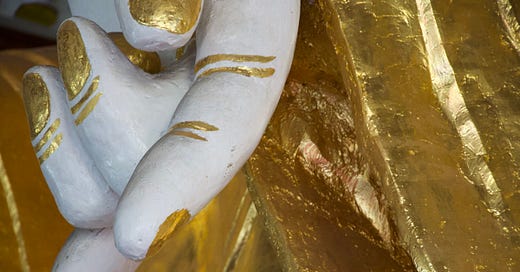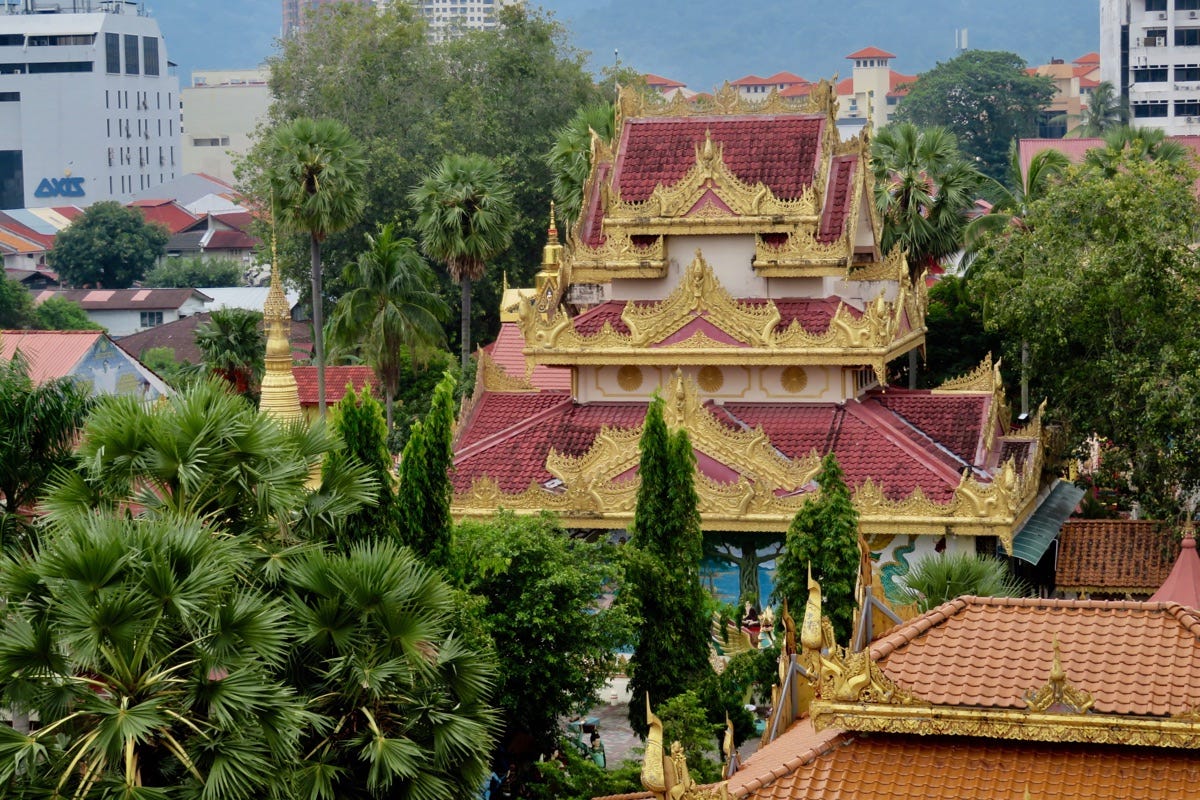Given my efforts so far you might be thinking I have it in for Penang. I’ve covered wrong-headed missionaries, wonky UNESCO efforts and unhinged travellers, but it isn’t all bad news.
I’ve had many a fun time there, most often spent wandering, poking around a little and eating a lot. This is where George Town excels. Like anywhere, it has its mainstay sights—restored houses, and some museums for example—but the real deal is elsewhere. In my personal opinion, the best way to experience the town is to get lost.
No, you are not in Shan State. Photo: Sally Arnold.
So how does one get lost in George Town? Get a taxi of course.
I tell my driver I want to go to the “Thai and Burmese temples,” and for my efforts receive a blank stare followed by an “eh?” Regardless, not knowing our final destination isn’t enough to stop him from starting on our merry way.
If you’re a George Town taxi driver, I apologise in advance, but all your colleagues suck. We’ve driven for five minutes or so by the time I finally manage to make myself understood, and, of course, we’ve been driving in the wrong direction. He laughs it off and I, for far from the first time, lament my language skills. He chatters distractedly as George Town’s façades slide by, and about 45 minutes later we pull up a short walk from the temples.
Fence peacock. Photo: Sally Arnold.
The two Buddhist temples face off across Lorong Burma, flipping their motherlands’ geographies. The Thai temple, Wat Chaiyamangalaram lies to the northwest. To the southeast sits Burma’s contribution, Dhammakarama Temple. Much to the chagrin of the Thais, the latter temple is the older.
Established in 1803 to cater to resident Burmese fishers and farmers, Dhammakarama Temple is my first stop. From the street, white stucco elephants flank the red and gold painted archway. To the left and right a white fence sports decorative peacocks, while within, flip flops lay scattered.
There to lend a helping hand. Photo: Stuart McDonald.
The site is busy with devotees, prostrate before the feet of a golden-robed, standing Buddha with the slightest of smirks. Its hands point in opposite directions—fearlessness—but you wouldn’t guess that from the worshippers. Behind it, hundreds of small white icons in the same pose stand on tiny pedestals. Beneath each is a name, I assume that of a donor.
Outside, a moderate-sized chedi brings Yangon’s Shwedagon to mind in a vague kind of a way. Beyond it sits another temple building that could be straight out of Shan State—or Mae Hong Son for that matter.
Altogether now. Photo: Sally Arnold.
The site isn’t shy when it comes to its colour scheme. There are baby blues and pinks aplenty. One display has a cement lotus flower in a pond, aluminium arms stretching out to support bowls and candles. Behind it, a mural tells a story layered atop a pastel blue sky dotted with vanilla clouds. It is easy to imagine the lotus flower spinning like a fairground carousel—all that is missing is the fairy lights.
Across the road, Wat Chaiyamangalaram, may not be the oldest Buddhist temple in town, but it is the largest. Built around forty years after Dhammakarama, the Governor of the time granted the land to the Thai community following their request for an allotment. As with the Burmese temple, there are flip-flops aplenty outside the main enclosure, though in this case, a nearby sign warns to “beware of shoe thieves”—not all have mindfulness front and centre.
Poking around. Photo: Stuart McDonald.
Around a dozen years after its founding, on the 2,500th anniversary of the birth of Gautama Buddha, the temple added a large reclining Buddha. At some 30 metres long, at one time it was considered to be the third-longest on the planet. This title may well be long lost, but it remains a stalwart of the sightseeing scene.
As with the Burmese temple, the Thais have doubled down on pastels. The Buddha reclines upon a teal axe pillow with a baby blue wall filling out the background. The statue’s shiny pointed toes offer up a near glowing skin tone. Quite the comparison to the more sombre reclining Buddha tootsies you’ll see in Thailand.
These tootsies were not made for walking. Photo: Sally Arnold.
More interesting is a story behind the temple’s first abbot. Honourable father Kuat was a particular fan of Penang laksa—and to this day devotees bring steaming bowls of the dish to offer up at his shrine.
I’ll be sure to honour him with a bowl later in the day but will most definitely eat it. More on getting lost in George Town tomorrow.
Couchfish is 100 per cent independent and reader-supported. Please feel free to share this story with a friend. Thank you!



















Share this post